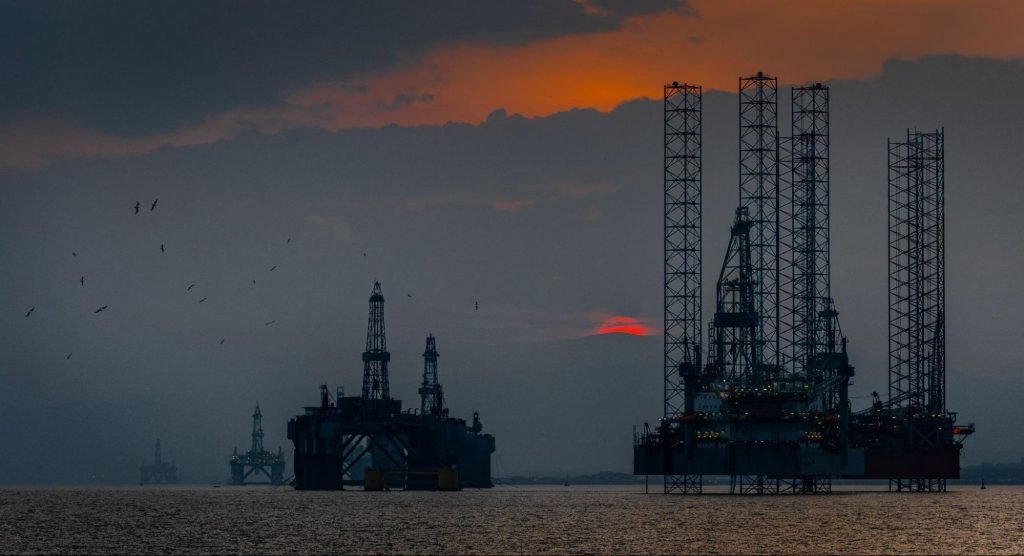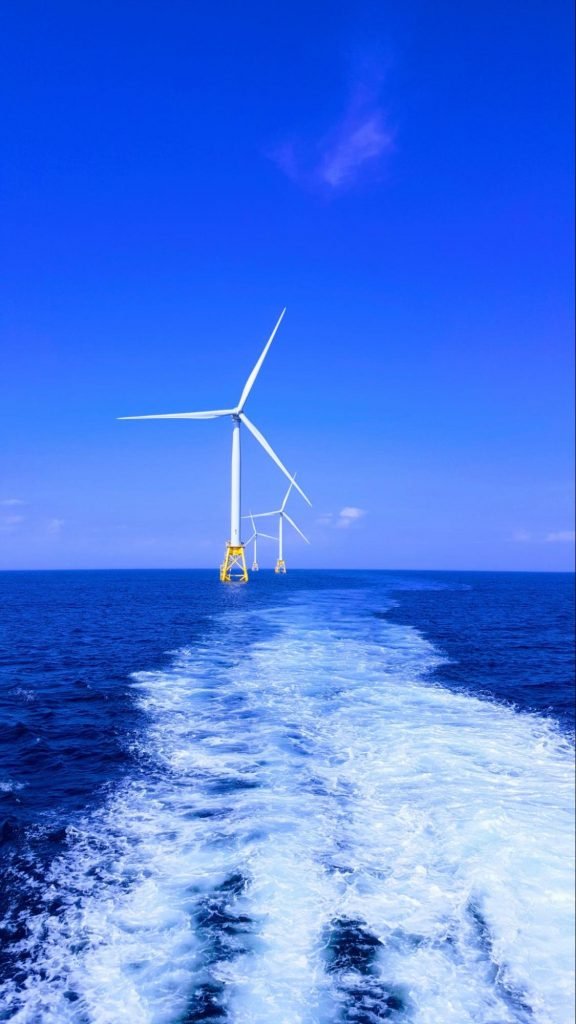The British Energy Crisis Shouldn’t Kill… But It Should Hurt
The United Kingdom is facing the worst energy crisis in Western Europe, with no long-term plan to get out. British energy prices are set to rise by 80% this October, bringing the total price tag to almost triple what it was a year ago. As the British government strives to address this problem, it must look beyond short-term solutions and instead focus on the true root causes of the high prices: fossil fuel dependence and systemic energy inefficiency. The crisis holds lessons for America as well, whose dependence on foreign oil is hidden behind claims of energy independence and intricate global supply chains.
Burning the (Gas) Candle at Both Ends
Natural Gas made up 42% of the UK’s energy consumption in 2020, with another 31% from oil, while renewables and nuclear only accounted for 12.5%. In addition to its role in heating about 85% of British homes, natural gas generates more than one-third of its electricity. This incredibly high exposure to natural gas has been made all the more precarious by the UK’s reliance on foreign supply, with about half of its natural gas consumption coming from imports. Despite not importing much of its gas directly from Russia, the sudden drop in supply has put a sharp constraint on gas markets and raised prices across Europe. Britain’s dependence on natural gas has made the nation deeply vulnerable to this kind of supply shock. In other words, this crunch was waiting to happen.
Source: UK Office for National Statistics
Cap and Drill
Liz Truss, the UK’s new Prime Minister, has announced a cap on energy prices which will bring average annual prices to £2,500 per household, down from the projected £3,550. While this may go a long way towards easing the financial burden of energy on the British people, it still represents a doubling in costs compared to a year ago. There is some hope that this cap will help curb inflation and thereby lower other unusually high bills that households are facing, but unfortunately this is far from a complete solution.
The Achilles heel of this plan is its time frame. A price cap will help this winter, and perhaps next year as well, but eventually the birds must come home to roost. A price cap for households has no direct impact on wholesale energy prices in the United Kingdom, and somebody must foot the bill. The Prime Minister has rejected the proposal for a windfall tax on energy companies, so it is almost unavoidable that the costs of the plan will be borne by the British people in the years to come. Deutsche Bank estimates the cap, along with a planned £40 billion package to support businesses, will result in a bill of £180 billion or just over 8% of GDP.
Furthermore, the cost of this artificially low cap will continue building up year-on-year until energy prices drop substantially. Truss herself has acknowledged this shortcoming, arguing in the cap’s announcement speech that she “will end the U.K.’s short-termist approach to energy supply once and for all” and plans to make the United Kingdom a net energy exporter by 2040. However, how she plans on accomplishing this goal relies on issuing more permits in the North Sea – a solution that could undermine Britain’s environmental goals more than it will solve its energy problems.
There is something attractive about the simplicity of Truss’s solution: the UK doesn’t have enough oil and gas, so they should pump more out of the ground. Setting aside the environmental implications, however, more oil and gas wouldn’t solve the UK’s fundamental energy problem for two main reasons:
First, British domestic production has a negligible impact on global prices Britain pays, particularly with regards to oil. In the absence of a requirement for British oil companies to sell domestically, the United Kingdom will continue to pay global commodity prices that will be unchanged by greater domestic production while oil and gas produced in Scotland’s North Sea will be sold into global markets to the highest bidder. Historically, the price of gasoline at the pump in Britain has closely matched the price of crude oil, as shown below;
Second, issuing North Sea drilling permits sets off a timeline with small short- and medium-term effects, yet larger but undesirable long-term effects. The process of installing an oil rig, from permit issuance to first barrels, is roughly 2-3 years, which means that permits issued today would not have any impact on the oil and gas supply in Britain until 2024 or 2025. Furthermore, the expected life of an oil rig is 25-30 years, with companies investing in those assets doing so with the intention of earning back their investment over that lifetime. By comparison, solar and onshore wind normally take less than two years to build and would help, rather than hinder, the UK’s decarbonization efforts consistently over the long-term.
This timeline is fundamentally inconsistent with the UK’s legally binding commitment to net zero emissions by 2050 and its interim target of 78% reduction by 2035, making those objectives nearly impossible to achieve. Short-sightedness is all too common in energy policy: the oil and gas leasing provisions within America’s Inflation Reduction Act introduce a similar friction, with any rigs built on those permits working against the US’s own net-zero-by-2050 commitment.
Insulating Britain from Russia
The United Kingdom needs to lower short-term energy prices, address its vulnerability to oil and gas markets, and invest in domestic generation. This is a hard problem. There is no single solution, and it is unavoidable that this energy crisis will hurt the British people.
It’s arguable that the short-term pain of the crisis is long-term beneficial; Britons are made acutely aware of the vulnerability created by reliance on fossil fuels and so public support for long-term solutions is generated. “Never let a good crisis go to waste,” as Winston Churchill famously suggested. However, neither the problems nor their solutions should kill, and careful planning on the part of the government could go a long way to addressing the root causes.
In the short term, it is far more effective to focus on demand, rather than supply. It is faster, cheaper and more effective to reduce overall energy demand in the UK than attempting to scale up domestic supply. For example, installing cavity wall insulation costs about £1,350 in the United Kingdom, and can save the average home more than 25% on their energy bills. At 2019 energy prices, this reflected a payback period of 4.7 years, but with 2022 prices that could be as little as 1.5 years. The cap is important to reduce immediate suffering, but the UK should also be careful to ensure that total energy usage goes in the right direction.
One way to accomplish this goal is with energy efficiency, and insulation in particular. The energy efficiency of British homes lags far behind the rest of Europe; one study found that homes in the UK lose three times as much heat during cold weather as those in Germany. As only about half of homes have solid wall insulation, more retrofits and weatherization are undeniably needed.
In the long term, renewable energy is faster to implement, more compatible with climate goals, and more impactful than scaling up domestic oil and gas production. More than four-fifths of British homes still use gas for heating, and so there is a baseload of demand which is unlikely to disappear without mass electrification of heating. This is not immediately necessary, as saving natural gas for use in heating by switching to renewables and batteries for electricity will have an incredible impact on gas demand and therefore decrease vulnerability to this kind of supply shock. Carbon Brief found that new wind energy projects can cost as little as 11% as much as running gas-fired power plants in the UK due to record high prices for gas and record low prices for wind.
This winter is going to be a harsh one for the British people. It is, unfortunately, too late to avoid much of the pain that high gas prices will cause. However, this is an incredible opportunity to reduce, rather than step up, Britain’s dependence on natural gas and build out resilient renewable infrastructure, making progress toward their goal of 100% renewable generation by 2035. In the shorter term, energy efficiency and other demand reduction programs would go a long way to lessen the bill that the energy cap will stick them within the coming years.
Lessons from Across the Pond
The US must recognize Britain’s predicament as evidence that a nation cannot drill itself out of an energy crisis. Despite relative freedom from Russian oil and gas, the UK acutely felt the effects of a slowdown in Russian supply. The US is in a much more secure position, with near energy independence; however, independence does not equate to immunity. Oil commodity prices are deeply dependent on supply from Russia, OPEC, China, and other nations with whom foreign relations can be unpredictable. Those prices are then translated into the American market as domestic producers decide whether or not to export oil and Liquified Natural Gas (LNG), which can thereby result in higher prices for the public. Similar to the UK, America’s solutions include more renewable energy, which is often consumed closer to the point of generation, and energy efficiency to lower overall demand.
Beyond simple sensitivity to global fluctuations in oil and gas prices, the US is exposed to an international supply chain that is itself vulnerable. In addition to direct energy flows, or the imports and exports of energy, indirect energy flows create their own kind of reliance. Even if the US does not import oil directly, we and our allies do rely on goods produced in Asia (particularly China) that require lots of Russian oil and gas to produce (i.e. ‘embodied energy’). Researchers point out that by improving domestic production that uses clean energy, “the US can not only increase its competitiveness in global markets but promote global energy security.”
In an increasingly globalized energy economy, the lines between domestic and international market dynamics get thinner and thinner. The US should take this moment to reflect on its own energy vulnerabilities, accelerate scaling low-carbon energy production and storage solutions, and invest in domestic production to protect ourselves from future crises like this one. Our next supply shock could be just around the corner.
Construction is one key area in which energy inefficiencies are common, and ADL’s work includes promoting innovative strategies and technologies for promoting energy efficiency across the sector. We also work with utilities and other major stakeholders to identify and deploy clean energy and transportation solutions, improving energy independence and environmental outcomes for partners all over the world.





